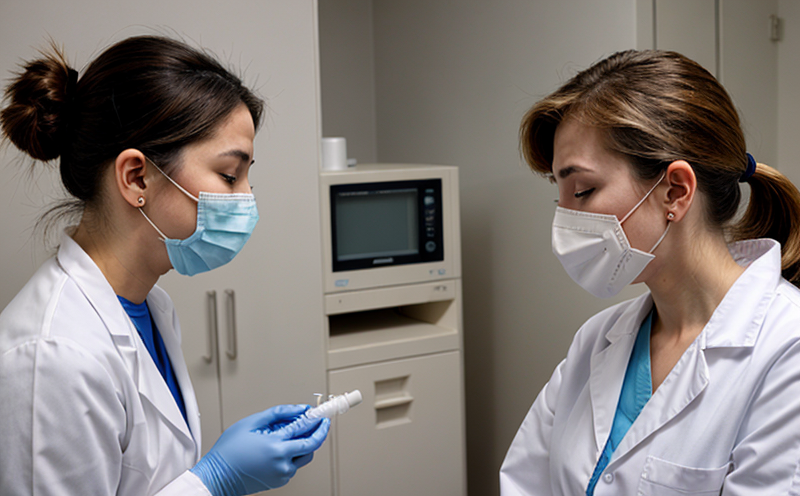Environmental Allergen Load Testing in Schools and Offices
The demand for a healthier indoor environment has never been greater, especially within schools and offices where vulnerable populations such as children and elderly individuals spend significant portions of their day. Environmental allergens like pollen, mold spores, pet dander, and dust mites can trigger allergic reactions or exacerbate respiratory conditions in susceptible individuals. By conducting Environmental Allergen Load Testing in schools and offices, facilities managers and quality assurance teams can identify and mitigate these potential health risks.
Our testing service employs advanced analytical techniques to measure the concentration of allergens present in air samples collected from indoor environments. This information is crucial for understanding the levels of exposure that occupants may experience daily. The goal is not only to provide a benchmark but also to offer actionable insights that can be used to implement effective remediation strategies.
The process involves collecting air samples using standardized sampling devices, which are then analyzed in our accredited laboratory. We adhere strictly to international standards such as ISO 14644 and ASTM E2537 to ensure accuracy and reliability of results. The testing cycle typically spans from two to four weeks depending on the complexity of the environment being assessed.
Our team works closely with clients throughout every stage of the project, from initial consultation through final report delivery. We offer customized solutions tailored to meet specific facility needs while ensuring compliance with relevant regulations and best practices.
The results of these tests play a critical role in guiding decision-making processes related to indoor air quality improvements. From selecting appropriate cleaning products and methods to implementing HVAC system modifications, our findings provide valuable guidance on how best to enhance comfort and safety for all occupants.
By leveraging our expertise in this area, organizations can create safer environments that promote better health outcomes among staff members and students alike. It is essential work that contributes significantly towards maintaining high standards of hygiene and well-being within educational institutions as well as professional settings.
Applied Standards
| Standard | Description |
|---|---|
| ISO 14644-3:2019 | International standard for cleanroom classification, which includes guidelines for sampling and measuring airborne particles including allergens. |
| ASTM E2537-18 | Standard practice for sampling and analysis of indoor air for biological pollutants, specifically targeting allergens like mold spores and pet dander. |
| EN 406:2019 | European standard specifying methods for the determination of total volatile organic compounds (TVOCs) in ambient air, which can sometimes correlate with allergic reactions due to their irritating nature. |
| CAN/CGSB-5.318.1:2019 | Canadian standard providing recommendations on the control of indoor allergens and irritants, including procedures for sampling and analysis similar to those outlined in ISO 14644. |
These standards form the backbone of our testing protocols, ensuring that every aspect of sample collection, transport, processing, and final evaluation adheres strictly to recognized best practices. Compliance with these guidelines not only enhances the credibility of our reports but also supports continuous improvement efforts aimed at enhancing overall indoor air quality.
Customer Impact and Satisfaction
Implementing an effective environmental allergen load testing program can yield numerous benefits for both educational institutions and businesses. For schools, this service helps ensure that students with asthma or other respiratory conditions are provided with a safer learning environment free from harmful allergens. Additionally, it allows administrators to monitor changes over time as part of their ongoing efforts to maintain optimal health standards.
In the context of corporate offices, such testing assists employers in creating healthier workplaces conducive to productivity and employee satisfaction. By identifying problem areas early on, companies can take proactive steps to address issues before they escalate into more serious problems affecting both individual wellbeing and organizational performance.
Our clients often report increased levels of customer satisfaction following successful completion of our projects. Many have noted improvements in staff morale along with reductions in absenteeism linked directly back to better air quality within their facilities. Furthermore, there has been a noticeable decrease in healthcare costs associated with treating allergy-related illnesses among employees and visitors alike.
The data generated from these tests serves as an important tool for making informed decisions about future investments in green technologies or infrastructure upgrades designed specifically around improving indoor air quality. In essence, it provides peace of mind knowing that all necessary precautions have been taken to protect those who spend their days inside these buildings.
Use Cases and Application Examples
- New School Construction: During the planning phase of a new school facility, testing can help identify potential allergen hotspots early in the design process so that architects can incorporate appropriate measures into the blueprint.
- Existing Building Renovation: When renovating an existing building, it is prudent to conduct pre-renovation and post-renovation tests to assess progress towards meeting indoor air quality goals.
- Dormitory Housing: Dormitories often house large numbers of students living together in close quarters. Conducting periodic tests here could help identify any recurring issues that may require long-term solutions.
- Office Space Occupancy Surges: With the rise in remote work trends, many office spaces are seeing increased occupancy rates. Regular testing ensures continued compliance with health and safety regulations during these dynamic times.
- Hospital Wing Expansion: Hospitals frequently expand their facilities to accommodate growing patient populations. Before starting construction on new wings or renovations, thorough allergen load assessments should be performed to set a baseline for future monitoring.
The above examples illustrate just some of the diverse applications where environmental allergen load testing proves beneficial. Whether it's ensuring compliance with local regulations or simply improving employee/occupant comfort and productivity, this service offers tangible advantages across various sectors.





